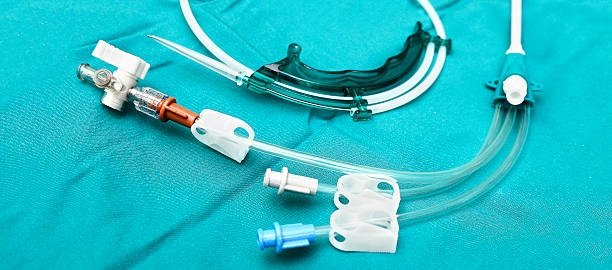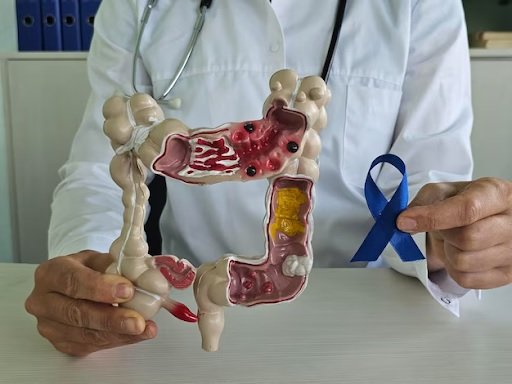In the fast-evolving world of medical technology, few materials stand out as significantly as PTFE (polytetrafluoroethylene) when it comes to medical applications. Often hailed for its exceptional properties, PTFE medical tubing has become a cornerstone in a wide range of healthcare procedures, from surgical interventions to diagnostic testing. But what exactly makes PTFE medical tubing the preferred choice in these critical settings? The answer lies in its unique combination of versatility, strength, and unparalleled reliability. Let’s explore why PTFE medical tubing is essential in modern healthcare and how it offers unmatched benefits for both medical professionals and patients alike.
Unrivaled Durability and Strength
When it comes to medical equipment, durability is non-negotiable. PTFE Tubing is crafted from a material known for its robust resistance to damage, wear, and tear. This makes it an excellent choice for applications requiring tubing that can withstand harsh environments, including exposure to high temperatures, chemicals, and physical stress. In medical procedures, where tubes often need to endure various pressures and conditions, PTFE’s resistance to degradation ensures that it retains its structural integrity, even in demanding environments.
Additionally, PTFE medical tubing excels in areas where flexibility is needed. Despite its remarkable strength, PTFE tubing maintains its flexibility, offering ease of use without compromising its ability to function under stress. Whether the tubing is used in fluid transfer, catheter systems, or other medical devices, PTFE remains durable yet adaptable to the needs of the healthcare provider.
Superior Biocompatibility for Patient Safety
For medical tubing, one of the most critical factors to consider is biocompatibility—the ability to interact with the human body without causing adverse reactions. PTFE is one of the most biocompatible materials available, making it an excellent choice for devices that will be in direct contact with human tissues or fluids.
PTFE medical tubing is inert, meaning it does not react with bodily fluids, medications, or biological tissues. This minimizes the risk of inflammation, infection, or other complications that could arise from material incompatibility. This makes it suitable for a wide variety of applications, including catheterization, drug delivery systems, and endoscopic procedures, where safety and patient well-being are paramount.
By maintaining a non-reactive nature, PTFE ensures that medical procedures can be conducted with confidence, knowing that the material used will not introduce any unwanted substances into the patient’s body. In cases where precision and safety are crucial, this makes PTFE an indispensable material in medical care.
Resistance to Chemicals and Extreme Temperatures
PTFE’s resistance to a wide array of chemicals and extreme temperatures is one of the standout features that elevate it above other materials. Whether in diagnostic settings where various chemicals and reagents are involved or in surgical settings where high temperatures are common, PTFE remains unaffected by these harsh conditions.
This chemical resistance means that PTFE medical tubing can be used in environments where other materials would quickly degrade or fail. Its ability to resist corrosion from acids, alkalis, and organic solvents ensures that it remains intact and functional, even after extended exposure to these substances. This makes it a go-to choice for devices that require both chemical and heat resistance, like drug infusion systems or laboratory testing equipment.
Moreover, PTFE can withstand extreme temperature fluctuations without losing its properties. It remains stable under both high heat and freezing conditions, which is crucial in many medical processes that demand precision and reliability in a range of environments.
Excellent Fluid Flow Characteristics
Fluid dynamics are an essential consideration in many medical procedures. PTFE medical tubing is known for its smooth internal surface, which significantly reduces friction. This smooth surface promotes a steady, reliable flow of fluids—whether they are medications, saline, or bodily fluids—without obstruction or resistance. The reduced friction also lowers the likelihood of clogs, making PTFE an ideal choice for critical applications where consistent fluid delivery is needed, such as in intravenous (IV) lines or hemodialysis systems.
Additionally, PTFE’s smoothness reduces the potential for bacterial growth, an essential factor in maintaining hygiene and preventing infections. This feature is particularly important in healthcare settings, where minimizing the risk of contamination is of utmost importance.
Flexibility and Ease of Handling
While PTFE is renowned for its toughness, it also offers an impressive level of flexibility, making it easy to maneuver and handle in complex medical applications. Whether the tubing is being used in minimally invasive surgeries or inserted into delicate areas of the body, its flexibility allows for ease of insertion and positioning without risking injury or unnecessary discomfort to the patient.
This flexibility makes PTFE medical tubing perfect for use in a wide variety of medical instruments. It is often incorporated into devices such as catheters, endotracheal tubes, and surgical drains, where precise placement and flexibility are necessary. This quality ensures that medical practitioners can perform delicate procedures with greater ease and confidence.
Long-Term Reliability
The long-term reliability of PTFE medical tubing makes it a wise investment for both medical institutions and patients. Unlike other materials that may degrade over time or become brittle with extended use, PTFE maintains its integrity and functionality for years. This long-lasting performance ensures that medical professionals can rely on PTFE medical tubing in critical situations without worrying about premature failure or the need for frequent replacements.
For healthcare providers, this longevity translates into reduced maintenance costs and fewer interruptions in patient care. Patients, on the other hand, benefit from a more consistent and predictable experience during medical procedures.
Resistance to Sticking and Non-Adhesiveness
In medical settings, one crucial property of PTFE medical tubing is its resistance to sticking or adhesion. This is particularly useful in applications like catheter systems, where the tubing needs to glide smoothly through bodily passages. PTFE’s non-adhesive surface prevents the buildup of deposits, fluids, or tissue matter, which could otherwise impede the function of the tubing or cause complications.
This non-stick feature also aids in the cleaning and sterilization process, ensuring that PTFE medical tubing can be reused in a sterile and safe condition, thus supporting cost-effective and sustainable medical practices.
Easy Sterilization for Safe Use
Sterilization is another key concern when dealing with medical equipment, and PTFE rises to the occasion with its ease of sterilization. PTFE medical tubing can be sterilized using common methods such as autoclaving, gamma radiation, or ethylene oxide treatment, making it versatile for use across different medical environments.
This makes PTFE medical tubing an excellent choice for reusable devices, providing peace of mind to healthcare providers that the tubing can be sanitized thoroughly without compromising its material integrity. Sterility is non-negotiable in healthcare, and PTFE helps to ensure that medical procedures can be conducted safely and without risk of infection.

Conclusion: The Gold Standard for Medical Tubing
PTFE medical tubing offers a perfect blend of durability, safety, and versatility, making it an essential material in the modern medical field. With its superior resistance to chemicals, heat, and wear, along with its biocompatibility, flexibility, and easy sterilization, PTFE ensures that healthcare providers can offer the highest quality care to their patients.
From catheter systems to drug delivery mechanisms, PTFE medical tubing ensures that critical medical processes can be carried out with reliability and precision. Whether you’re a medical professional looking for top-tier materials for your practice or a patient seeking peace of mind during treatment, PTFE medical tubing delivers a level of performance that is unparalleled in the medical field.










